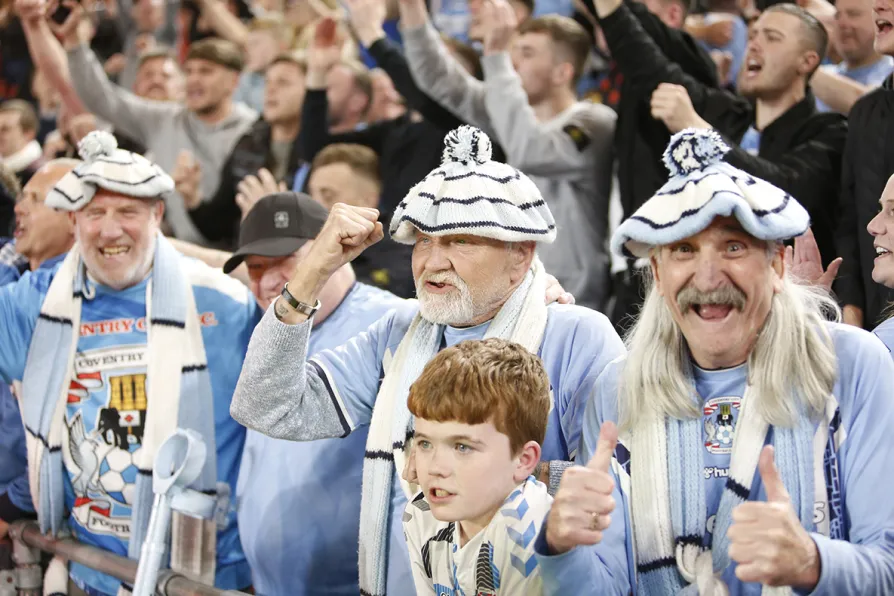Ghosts of proud Coventry seek to inspire
With Coventry City set to take on Luton Town in this weekend’s Championship Playoff final, LAYTH YOUSIF takes a look at the proud history of this club, which, along with its fans, has proved itself to be a survivor

 Coventry City fans in the stands celebrate their team getting to the play-off final following the Championship play-off semi-final second leg match at Riverside Stadium, Middlesbrough, May 17, 2023
Coventry City fans in the stands celebrate their team getting to the play-off final following the Championship play-off semi-final second leg match at Riverside Stadium, Middlesbrough, May 17, 2023
THE people of Coventry are survivors. Whether it be battling Nazis, Tories or hedge funds.
When Margaret Thatcher and her cabal of callous Tories effectively abandoned the country’s post-industrial bases in the north of England and the Midlands during the 1980s, the city of Coventry faced a struggle to reinvent itself amid demoralising deindustrialisation, unsettling urban decay and fierce unemployment.
Not for nothing did two-tone ska genius Jerry Dammers and The Specials pen their biting social commentary Ghost Town. After all, the legendary band hailed from Coventry.
Similar stories














